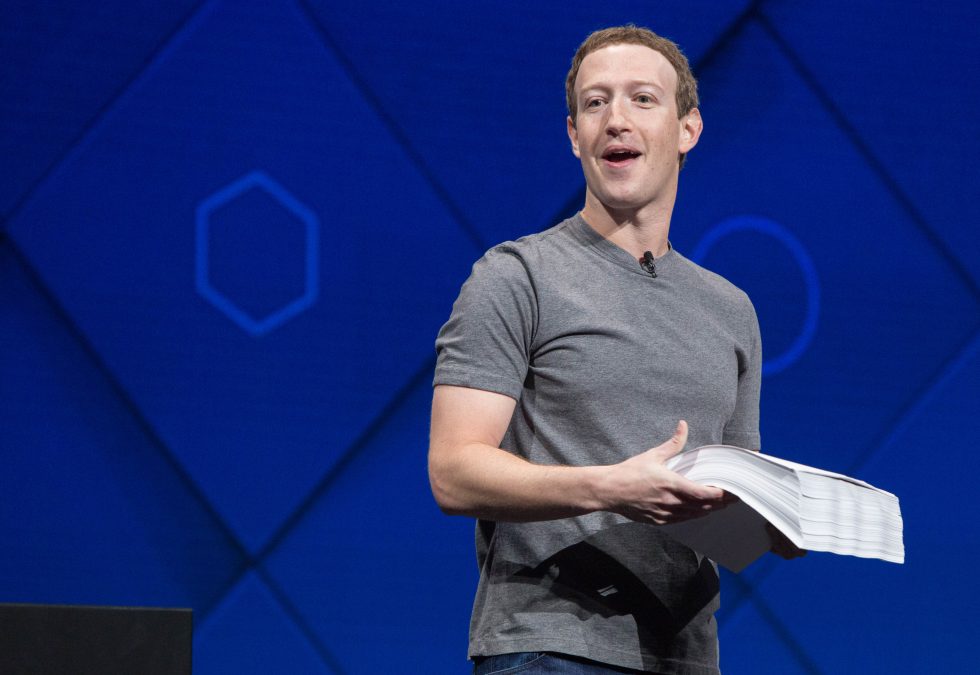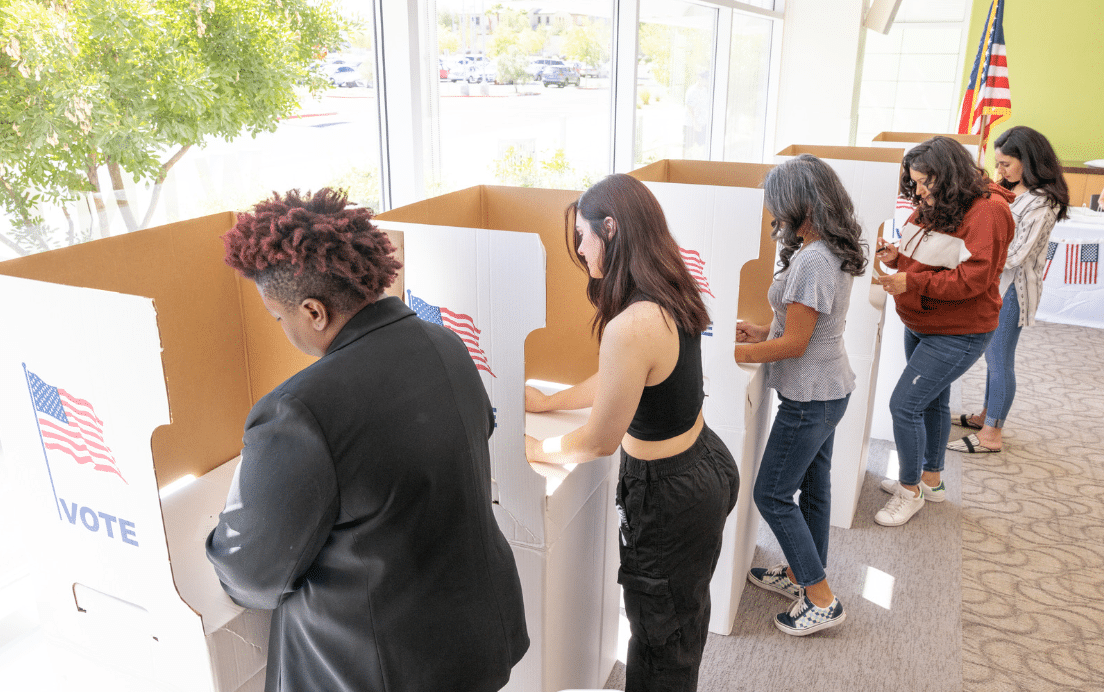Big Data is Winning Elections for Democrats—Time for Republicans to Catch Up (Pt. 1)
Delve inside the Left’s secret weapon for juicing turnout in the states: NGP VAN.
Modern elections are like an arms race, with both sides itching to develop the latest super weapon. Unfortunately, conservatives are losing that race.
The market for political data is one of the fastest-growing in the nation. Yet since 2008, the Right has fallen ever-further behind the Left in acquiring the tools needed to find, register, and turn out voters in their tens of millions. While Republicans spend a fortune on political advertisements and Election Day turnout, Democrats put the lion’s share of their resources into voter registration, door-knocking, and mail-in ballot harvesting.
We’ve seen the result: Many elections are decided long before the first Tuesday in November.
The Left is innovating while the Right remains mystified by defeat-after-defeat. Yet two decades ago those roles were reversed. So what went wrong? Conservatives got complacent while leftists set their sights on a permanent majority in Washington. The results speak for themselves: Today’s Democrats are masters of squeezing a ballot from every last likely Democratic voter in the country, but today’s Republicans are content to let voters sort themselves out.
We’re on the path to a cycle-after-cycle drubbing unless conservatives commit themselves to beating “progressives” at their own game—and they can. That turnabout starts by exposing the secrets of the Democrats’ Big Data machine.
Restoration of America has already revealed how the Left uses data on 200 million Americans to discover its preferred voters, and how partisan nonprofits use that data to register new voters and win elections. Now we dive into the engine powering the Democratic Party’s vast turnout operation: NGP VAN.
Winning Elections 101
“Everything You Need to Run a Winning Campaign. Get Elected with NGP VAN.” (Source)
Few outside campaign circles have heard of NGP VAN, yet this company may be the most powerful factor behind Democratic Party election victories in the country. NGP VAN sits at the center of a nexus of sophisticated firms that together offer a one-stop shop for “progressive” campaigns: Phonebanking and mass texting, strategy and political advertising, fundraising and compliance, and—most importantly—the best voter data money can buy.
It’s no wonder that virtually every Democrat seeking office nationwide—be it the Oval Office or mayor—makes NGP VAN his first stop. A glance at the Federal Election Commission (FEC) website reveals nearly 55,000 hits for NGP VAN since 2004, many ranging in the high 6-figures from the Obama reelection campaign and the Democratic National Committee (DNC).
Ditto the hundreds or perhaps thousands of left-wing activist groups working to elect Democrats and push policy in Washington. As true believers they know that without this nexus’ services they stand little chance against their Republican opponents (who must rely on a constellation of competing vendors to fill those needs).
Bernie Sanders is among them. In the 2016 Democratic primary, pundits marveled when the Vermont socialist nearly rocketed past Hillary Clinton in the polls—only for his campaign to have its access to NGP VAN voter data cut off by the company following a kerfuffle with the Clinton campaign.
Lawsuits ensued; senior Sanders staffers accused the DNC of “us[ing] this incident” to “undermine our campaign.” Without the data, Sanders’ campaign lost some $600,000 in potential donations every day. Access was only restored after he granted concessions to the DNC. But the lesson is clear: In an instant, Sanders’ momentum was wiped out by this “powerful gatekeeper”—while Clinton went on to win her primary.
The Rise of Big Election Data
Data software and voter persuasion tools are decidedly unsexy. But doing them well is often the difference between triumph and defeat.
Before the early 2000s, both parties did everything on paper. Voter contact lists were typed up using lists of registered voters printed out in street order by precinct. Phone numbers had to be gathered door-to-door and handwritten. Campaigns had to do all of this by themselves—either with an army of volunteers (assuming they could create one) or, beginning in the 1980s, by paid canvassers and pricey phonebanking firms. Understandably, most political action committees opted to shell out instead for TV and radio ads. And perhaps most amazingly, very little of this voter data was carried over into the next election.
Then came the “digital revolution.” Suddenly, the internet made online fundraising possible. It encouraged rapid data-sharing that simply couldn’t be done by fax, phone, or “snail mail.” Cell phones (later smart phones) made it easier to contact potential voters. Email became a cheap way to reach millions of potential voters day-after-day. Platforms like YouTube made it possible to personalize ads for a niche audience—seniors, college students, suburban moms—while social media accumulated unfathomable amounts of useful, purchasable data on Americans (which they happily supplied themselves).
NGP VAN is the result of a 2010 merger between two pioneering firms born during this explosion in new campaign techniques. NGP Software was created in 1997 by Nathaniel Pearlman, a programmer and early proponent of internet- and data-driven campaigning who cut his teeth on Gary Hart’s 1984 and 1988 presidential campaigns, and was later chief technology officer for Hillary Clinton’s 2008 presidential campaign.
NGP’s killer app was its affordability and accessibility. Pearlman’s software could record fundraising vendors, track the FEC’s tedious compliance requirements, and collate campaigns’ contact lists cheaper than its competitors. But he ultimately envisioned “an integrated political campaign database operable through a single, understandable, coherent interface” to replace the “antique databases” and “overlapping spreadsheets” ubiquitous in Democratic campaigns—who soon rushed to his firm in spades.
“By 2007,” Pearlman writes, “’familiarity with NGP was a standard line in the resumes of would-be Democratic software.” By 2010, more than 75 percent of congressional Democrats and every major Democratic Party campaign arm was an NGP client. That software is still in use, with the company rolling out its latest iteration ahead of the 2018 midterm elections to integrate with Zoom webinars, Google software, and Facebook’s targeted ad services.
Meanwhile, the Voter Action Network (VAN) was filling a different need: Building comprehensive voter lists. VAN is the brainchild of Mark L. Sullivan, a campaign operative who created VAN to move Democrats “from an era of 3”x5” index cards and handwritten notes” to “many thousands of users simultaneously entering and extracting vast amounts of data.” The test was Iowa Sen. Tom Harkin’s (D) 2002 reelection campaign, widely expected to be a closely run thing (at best).
Sullivan’s strategy hinged on turning out absentee and marginal voters, who often miss midterm elections. Harkin’s campaign hired 100 staffers who soon generated a massive online voter file accessible by any Democratic campaign across the state. “Never again would resources be spent twice calling the same bad phone number or mailing to the same dead voters,” Sullivan writes. That voter file could be used to quickly generate walk lists for paid, Palm Pilot-armed canvassers and ballot harvesters, who between them knocked on 250,000 doors and harvested some 50,000 absentee ballots.
Sullivan recalls:
[Harkin’s campaign] enjoyed two advantages our Republican counterparts clearly lacked—a giant lead in absentee voting and reliable knowledge of just how big that lead was. . . . We entered Election Day with the confident knowledge that we held a virtually unsurpassable lead of more than 60,000 Democratic voters over Republican voters among the votes already cast.
In fact, Sen. Harkin won reelection by over 103,000 votes. The Voter Activation Network was born.

VAN’s canvassing software is called “MiniVAN,” and it’s been in constant use by Democrats since at least the 2004 election. That’s when VAN served as the voter data platform for America Coming Together, the biggest get-out-the-vote PAC created to date thanks to $40 million in funding from George Soros and Progressive Insurance’s Peter Lewis. (Notably, America Coming Together’s then-state director, Michael Frias, now heads the Left’s other big data firm, Catalist.)
Using MiniVAN, canvassers could access voter data in 17 states using the Palm Pilot (later iPhone) tactic devised in Iowa—generating 7 million more votes for John Kerry than Al Gore received four years prior.
By 2006, VAN had developed into VoteBuilder, a technology used to great effect by Barack Obama’s 2008 presidential campaign (and still marketed by NGP VAN.) VoteBuilder was created to help the Obama team catch up with microtargeting techniques pioneered by Republican strategists, most famously Karl Rove—and was often given away for free. It works by tracking the interactions between canvassers and potential voters to enhance “voter persuasion” techniques—essentially informing campaigns about which voters they’re likely to win and what messages they respond to.
Over time (and across enough states), that creates an enormous nationwide database of likely Democratic voters that can be used again and again. And it’s extremely valuable—in 2010 alone, the AFL-CIO paid VAN nearly $900,000 for access to its coveted voter file. Even small groups will pay for access; Minnesota Voice, a small get-out-the-vote group, shelled out over 12 percent of its entire budget in 2017 just to access VAN’s voter file.
Per Sullivan:
No staffer on any Democratic campaign would ever again do without the best tools in the industry for efficiently managing their voter contact problem. Staff moving from campaign to campaign would always hit the ground running with familiar and reliable tools . . . . Data collected at every level would be preserved for future campaigns and would feed the best possible nationwide modeling and targeting programs [emphasis added].
Indeed, Democratic campaigns won’t even consider hiring managers and field directors who aren’t versed in “the VAN.” Fundamentally, Nathaniel Pearlman sees these slick applications—microtargeting, online voter files, text message advertising—as “new tools to implement old strategies . . . fundraising, organizing, tracking supporters, persuasion and communications, and getting out the vote.”
And that’s what the merger of NGP Software and the Voter Activation Network achieved in December 2010. Democrats now had a single shop for arming themselves with the latest weapons for the electoral battlefield… while Republicans arguably peaked in 2006.
Printable PDF version available here
In Part 2, we map out the NGP VAN empire and reveal its insidious—perhaps illegal—influence in U.S. cities. Available here.
This report was made possible by research from Heather Honey and Verity Vote



